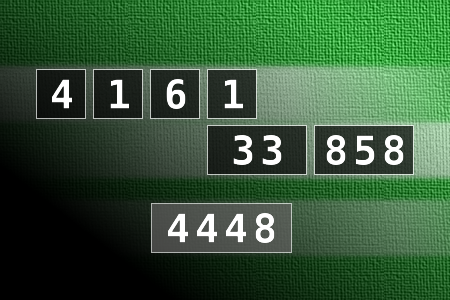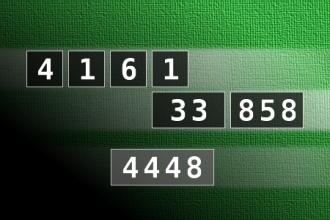Calculate the number 4448
NUMBERMANIA: Calculate the number 4448 using numbers [4, 1, 6, 1, 33, 858] and basic arithmetic operations (+, -, *, /). Each of the numbers can be used only once.Correct answers: 1
#brainteasers #math #numbermania


